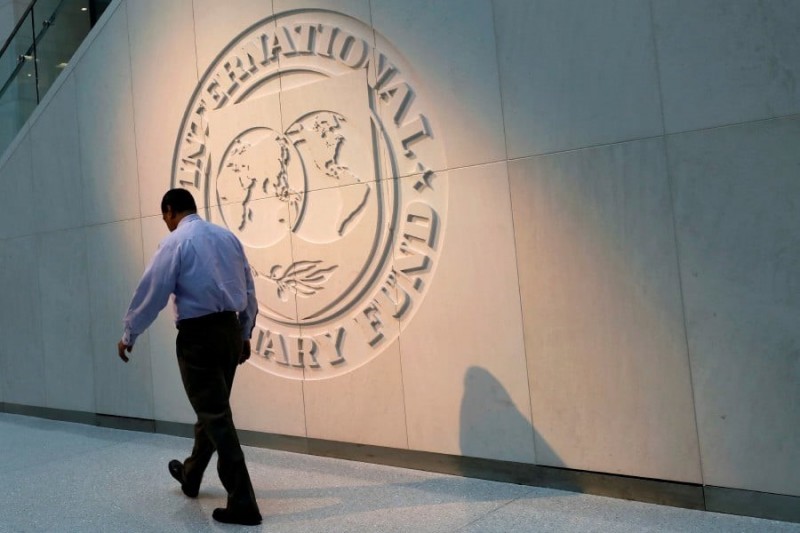
KUALA LUMPUR: The International Monetary Fund (IMF) and economists are sanguine over Malaysia's economic growth, expecting it to remain resilient this year and 2025.
This will be supported by increased consumer spending driven by withdrawals from the Employees Provident Fund's (EPF) Akaun Fleksibel and heightened government expenditure.
However, the IMF and economists contacted by Business Times said challenges remain as global economic headwinds are expected to persist, influenced by US economic performance and interest rates, as well as regional issues, particularly the pace of growth in China.
In the previous quarter, Malaysia's gross domestic product (GDP) growth contracted by 2.1 per cent quarter-over-quarter (QoQ), due to a normalisation of private consumption growth.
Exports had fallen 6.0 per cent YoY, largely impacted by lower trade volumes with China amid its domestic slowdown.
The IMF mission chief for Malaysia Masahiro Nozaki said the country's economy is projected to rebound in 2024, with growth expected to rise from 3.7 per cent in 2023 to 4.4 per cent in 2024 and 2025.
"This optimistic outlook is supported by resilient domestic consumption and a recovery in external demand.
"However, the growth outlook is not without risks, as external factors such as commodity price shocks, a global slowdown, particularly in China - Malaysia's largest trading partner - pose significant challenges," he told Business Times.
Economist Geoffrey Williams expects the country's GDP growth at 3.0 per cent to 4.0 per cent in 2024 because the economic conditions are more or less similar with last year.
He said if the advance GDP growth estimates for Q1 are correct at only 3.9 per cent, compared to 5.6 per cent in Q1 last year, and below the expected growth of 4.0 per cent to 5.0 per cent, there will need to be extra growth in the remainder of the year.
"This could rely on a push to consumer expenditure from EPF withdrawals from Akaun Fleksibel and government spending. In a sense we will be buying growth from savers and taxpayers, to fuel economic activity.
"Extra growth is needed for the government to meet the 4.0-5.0 per cent target otherwise it will be within our forecast of 3.0-4.0 per cent like last year," he said.
His view isechoed by National Graduate Institute for Policy Studies (GRIPS) associate professor of development studies Guanie Lim who expected the full-year growth to hover around 4.5 per cent to 5.5 per cent.
This will be driven by domestic factors such as the introduction of Account 3 by the EPF, which could spur a mini consumption push, and a salary increase for civil servants, though its impact might be felt later.
Williams said the advanced GDP estimates for Malaysia's first quarter suggest a modest growth rate of 3.9 per cent, although there is potential for this figure to be revised upwards.
"Expectations are that the final results will reflect an annual growth rate around or slightly below 4.0 per cent. This indicates a slow start to the year, but one that aligns with broader economic projections," he added.
Vishrut Rana, an economist at S&P Global Ratings, said a gradual improvement in high-frequency economic activity indicators in Malaysia, signalling a pickup in growth momentum.
He added that while consumer spending has shown stronger growth, manufacturing indicators remain subdued.
"In 2023, Malaysia's growth was below trend at 3.6 per cent year-over-year due to weaker trade and manufacturing activity.
"For 2024, we forecast improved growth of 4.3 per cent driven by steady consumer activity and a gradual recovery in manufacturing," Vishrut explained.
Despite an expected improvement in external demand, a moderate global growth environment will likely prevent a strong manufacturing surge.
Vishrut further explained higher-for-longer global interest rates may lead to relatively tight external funding conditions and potential capital outflow pressures, though these are not expected to significantly alter the growth outlook.
Lim expects no major surprises in the first quarter GDP results, projecting it at around 4.0 per cent growth.
However, he warns of several challenges as domestically, the subsidy rationalisation is aimed at making the economy healthier and leaner but may result in short-term difficulties, such as faster-than-wage growth in product prices, potentially dampening consumer confidence.
"Internationally, ongoing trade wars between major economies could continue to restrict growth in smaller economies like Malaysia.
To mitigate these challenges, Lim proposed Malaysia to focus on fostering meaningful industrialisation and trimming its fiscal deficit.
"As Malaysia navigates these economic dynamics, the interplay between domestic policies and external factors will be crucial in shaping the nation's economic trajectory in the coming years," he added.
Economy Rice podcast macroeconomic analyst Aaron Pek said an important leading indicator, approvals of small and medium enterprises (SME) business loans, also showed stark improvement in 4Q23, implying greater business confidence.
"Assuming these trends had continued into 1Q24, it might be a sign that these SMEs are seeing greater consumer confidence.
"This would imply improved 1Q24 GDP growth, considering how private consumption has the greatest weight amongst factors influencing Malaysia's GDP growth," said Pek
He added there is low visibility on the economic outlook for the rest of 2024, given how much of the domestic economy hinges on external factors.
"Foreign driving factors to monitor include the performance of the US real estate sector, exports to China and US interest rate trajectory.
"Domestic driving factors to monitor include consumer spending and local inflation, in light of recent Account 3 withdrawals and the announced curtailing of government fuel subsidies," Pek added.
Source: https://www.nst.com.my/business/economy/2024/05/1051514/malaysias-economy-remain-resilient-2024-2025-imf-economists

